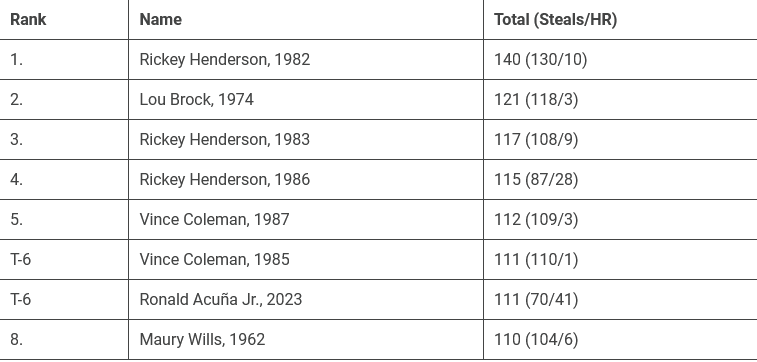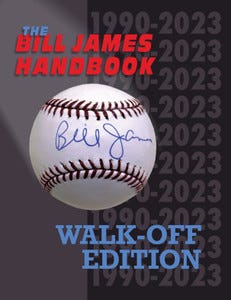When Ted Williams, 39, Battled Pete Runnels For 1958 American League Hitting Crown
PLUS: END OF AN ERA WITH 'BILL JAMES HANDBOOK' FOLDING AFTER 34 YEARS
IBWAA members love to write about baseball. So much so, we've decided to create our own newsletter about it! Subscribe to Here's the Pitch to expand your love of baseball, discover new voices, and support independent writing. Original content six days a week, straight to your inbox and straight from the hearts of baseball fans.
Pregame Pepper
Did you know…
Baseball would lose four icons tomorrow if Miggy Cabrera (Tigers), Adam Wainwright (Cardinals), Zack Greinke (Royals), and Joey Votto (Reds) all decide to retire . . .
Will San Diego’s recent hot streak save the job of manager Bob Melvin? . . .
After spending wildly last winter, the Padres plan to pare payroll, helped by the likely free-agent departures of starting pitcher Blake Snell and closer Josh Hader, both left-handers . . .
The Yankees will do almost anything to dump the contract of Gioncarlo Stanton, a veteran fading fast from his one-time MVP form . . .
Ronald Acuña, Jr. entered the weekend two steals shy of Otis Nixon’s club record (72).
SPEED PLUS POWER:
Leading Off
Williams edges Runnels for sixth A.L. batting title
By Andrew Sharp
More than 20 times since 1901, two teammates have finished first and second for the batting title in the American and National leagues. Nine times, the margins were close enough that it took until the last day of the season to determine who had the higher average.
In this era of sabermetrics, a batting average doesn’t hold the same sway as in decades past –- perhaps even with the players -- but it’s still a closely-followed stat. Back in 2003, for instance, Boston teammates Bill Mueller and Manny Ramirez went into Game 162 with Mueller leading, .327 to .325. Neither man started for the playoff-bound Red Sox. Mueller went 0-for-1 as a sub, and finished at .326.
The finish in 1976 was far more exciting. It took six hits in his last seven at-bats for George Brett to top fellow Royal Hal McRae, .333 to .332. Similarly in 1984, Don Mattingly’s four-for-five in Game 162 let him overtake Yankee teammate Dave Winfield, .343 to. 340.
In 1958, Ted Williams found himself competing with a teammate for what would become his sixth and final batting championship. After Washington Senators infielder Pete Runnels slumped to .230 in 1957, Calvin Griffith foolishly had traded him to Boston.
By mid-July in 1958, Runnels was hovering around .330 and leading the league in hitting, thanks in part to the tutelage of Williams. The Splendid Splinter was coming off a season in which he had hit an amazing .388 at age 39.
“I’ve picked up more hitting tips in two months with Ted than I had picked up in my entire career,” Runnels said in May 1958. His .387 average for July separated him from the rest of league.
At age 40, Williams wasn’t playing every day, although he never missed more than a day or two at a time. Still, well into the season, it wasn’t clear if Williams would get up enough times to make it to the qualifying minimum 502 plate appearances. That standard had been adopted after the 1954 season when Williams was denied a batting title because 136 walks kept him from reaching the then-required 400 official at-bats. (Some sources now list Williams as the winner in 1954.)
On September 24, however, Williams went 2-for-3 with a walk against the Yankees in Boston, raising his average to .320 and his plate appearances to 501. So the Red Sox, in fourth place, headed to Washington to face the last-place Senators in what otherwise would be a meaningless four games to finish the season. The only drama was whether Runnels or Williams would win the batting title.
After playing the Indians in Boston on September 24, Runnels was hitting .324. Because Runnels had been up far more times than Williams, it would be easier for the future Hall of Famers to raise his average with a good series. Given that Williams had been hitting better than .400 over the last 55 games in which he had appeared, the odds seemed in his favor.
On September 26, in the first game of a double-header, Williams was 2-for-3 with a walk, passing the required 502 times up and pushing his average to 3.2256. Runnels went 0-for-4 and dropped to 32219. Ted sat out the second game, while Pete had two hit in five at-bats, leaving him at 32258. It’s hard to get much closer.
With two games to go and Williams now with enough plate appearances, the two men were in that virtual tie. In the third game, Pete tripled the first time up. Ted walked. The next time up, they both singled. In their next at bats, both homered. “What do I have to do to beat this guy?” Runnels told reporters he was thinking. He had gone 3-for-6 and climbed back to .324, but Williams was 3-for-4 (and the walk) to reach .327.
Runnels failed to get a hit in the final game, falling to .322. Williams was 2-for-4, finishing the three games in which he played in Washington at 7-for-13 and a .328 average -- the final batting title for, arguably, the greatest hitter of all time.
In any case, Runnels was honored as the A.L. Comeback Player of the Year for 1958. He went on to win batting titles in Boston in 1960 and ’62.
In a 2001 autobiography, Williams admitted he was half pulling for Runnels to win the batting championship. “I was thinking in my heart, I hope he wins it…. I’m not going to give it to him, but I hope he wins it…. We weren’t in the pennant race. It certainly wouldn’t make much difference to me at that point. I wasn’t getting the kick out of it I had the year before.”
Runnels had a different take. “I enjoyed Williams catching me on the final day more than the later titles of 1960 and 1962 because of the great competition,” an admiring Runnels said years later, calling it the highlight of his career.
Andrew C. Sharp is a retired daily newspaper journalist and a SABR member who has written and edited several dozen Bio Project and Games Project essays. He blogs about D.C. baseball at washingtonbaseballhistory.com
Cleaning Up
‘Bill James Handbook’ Says Goodbye With Farewell Walk-off Edition
By Dan Schlossberg
The time has come. After 34 years, ACTA Publications and Sports Info Solutions has pulled the plug on the fabulous Bill James Handbook but saluted its 34-year legacy with a one-of-a-kind Walk-Off Edition to be published Dec. 1.
According to ACTA president and publisher Greg Pierce, “Change is inevitable in all areas of life, including baseball (look at all the rule changes from just the last couple of years). So we’ve decided it’s time to retire the Handbook. We are not going out with a whimper, but rather a bang (with apologies to T.S. Eliot).
“None of us, including Bill James, is planning on going anywhere soon, but most of the stats and analysis that have made The Bill James Handbook so valuable over more than three decades are now available more quickly and online, especially at SportsInfoSolutions.com, FieldingBible.com, and StatoftheWeek.com.”
The new book features several new essays by Bill James and reconsiderations of past Handbook articles by SIS staff and others analyzing how some of the ideas and predictions in the various annuals have held up over the years and influenced how baseball is played and analyzed today.
“This Walk-Off Edition is meant to be more of a grand slam in the bottom of the ninth than a strikeout with the bases loaded. So let us know what you think at info@sportsinfosolutions.com.
“Who knows? It may just lead to extra innings!”
Orders will be taken starting tomorrow, Oct. 1. The paperback sells for $24.95.
ACTA Publications can be contacted at its new address of 7135 W. Keeney St., Niles, IL 60714-3039 (Tel. 773-590-3801).
See also www.actapublications.com.
Former AP sportswriter Dan Schlossberg of Fair Lawn, NJ is the author of 41 baseball books, including The New Baseball Bible. Catch his byline in forbes.com, Memores & Dreams, Sports Collectors Digest, USA TODAY Sports Weekly, and other outlets. His email is ballauthor@gmail.com.
Timeless Trivia
“It’s like the end of an era.”
— Braves broadcaster Pete Van Wieren when TBS stopped covering Braves baseball after the 2007 season
This is the 50th anniversary of Baseball on TBS . . .
When TBS switched to a national package in 2008, the lone remaining SuperStation was Chicago’s WGN, which broadcast local games across the country . . .
Ted Turner converted local Atlanta outlet WTCG into TBS in 1973, then bought the Braves three years later so that he had a local club to use for his broadcasts . . .
Turner tried to promote TBS by assigning No. 17 to Andy Messersmith, a free-agent pitcher he signed, and subbing the word “Channel” for the pitcher’s surname on the back of his jersey . . .
At its peak, TBS carried 70 Braves games . . .
Broadcasters Pete Van Wieren, Skip Caray, and Ernie Johnson worked together for nearly 30 years . . .
Van Wieren, the lead broadcaster, could win the Ford C. Frick Award given each year to a top mikeman by the Baseball Hall of Fame but it would have to be a posthumous selection. Caray and Johnson have also passed away.
Know Your Editors
HERE’S THE PITCH is published daily except Sundays and holidays. Benjamin Chase [gopherben@gmail.com] handles Monday and Tuesday editions, Elizabeth Muratore [nymfan97@gmail.com] does Wednesday and Thursday, and Dan Schlossberg [ballauthor@gmail.com] edits the weekend editions on Friday and Saturday. Readers are encouraged to contribute comments, articles, and letters to the editor. HTP reserves the right to edit for brevity, clarity, and good taste.




